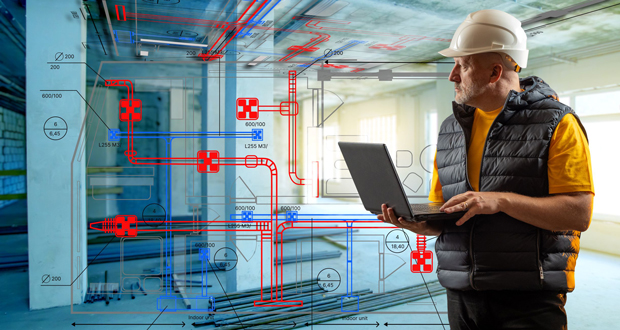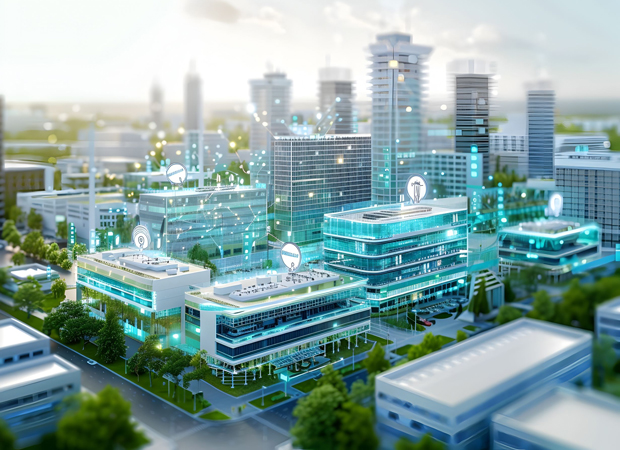 With the UK committing £630 million to public building retrofits and nearly 80 per cent of commercial properties at risk of being unlettable unless upgraded, the need for smart, future-focused retrofitting has never been clearer. The challenge is to introduce smart capabilities without the cost or disruption of full-scale redevelopment. Here, Peter Schwartz, senior technology consultant at IT and cyber security partner OryxAlign, explores how facilities managers can retrofit existing buildings for digital transformation by aligning IT and building systems, improving resilience and laying the foundations for future upgrades.
With the UK committing £630 million to public building retrofits and nearly 80 per cent of commercial properties at risk of being unlettable unless upgraded, the need for smart, future-focused retrofitting has never been clearer. The challenge is to introduce smart capabilities without the cost or disruption of full-scale redevelopment. Here, Peter Schwartz, senior technology consultant at IT and cyber security partner OryxAlign, explores how facilities managers can retrofit existing buildings for digital transformation by aligning IT and building systems, improving resilience and laying the foundations for future upgrades.
Making a building truly smart ready means thinking beyond immediate upgrades. Smart technologies depend on consistent connectivity and systems that can evolve with operational needs. So, aligning IT and building services from the start ensures that upgrades deliver long-term value.
Bridging old with new
Many estates still operate with isolated systems for HVAC, lighting, security and access control, supported by networks that were never designed for integration or high-volume data exchange.
The first step to modernising these systems starts with infrastructure. Establishing a unified, IP-based network allows connected technologies to communicate reliably and adapt over time. This involves upgrading cabling, switches and core networking equipment to support consistent standards across all services. With the right foundation in place, buildings gain the flexibility to adopt new platforms without further structural disruption.
A retrofit can be done in steps if a complete overhaul isn’t feasible. In fact, focusing on one system at a time helps demonstrate tangible returns and build stakeholder confidence. The best places to start are HVAC, access control and energy management because they offer quick efficiency gains and integrate easily with smart systems.
Scalable IT infrastructure that lasts
To make sure IT systems are future-proof and avoid costly redesigns down the line, we need to anticipate future capacity needs, design for interoperability between vendors and ensure that connectivity extends to the spaces where sensors and control systems will eventually be deployed.
Facilities managers should also consider how smart building systems interact with wider city infrastructure. Open APIs and cloud-based platforms increasingly allow integration with transport systems, grid energy pricing and other public services. Laying the technical groundwork now enables a building to become part of a broader, connected urban ecosystem later.
Building in cyber resilience
One downside to making buildings more connected is that they become bigger targets for cyber criminals as their risk surface expands. Each new endpoint, whether it’s a smart thermostat or an automated access gate, is a potential gateway for bad actors. In recent years, attacks on Internet of Things (IoT) and Operational Technology (OT) systems have increased sharply, meaning that security needs to be integrated from the design point rather than bolted on after.
A smart upgrade strategy involves segmenting networks, hardening devices, applying regular updates and aligning with recognised frameworks like those from the National Cyber Security Centre (NCSC). Without this foundation, the benefits of digital transformation can be quickly undermined by operational risks.
Cyber resilience relies on governance as much as technical strategy. Early collaboration between IT and facilities teams ensures security and operational priorities align from the outset.
Luckily, becoming smart ready doesn’t require a blank slate. With careful planning, incremental upgrades and the right infrastructure in place, even legacy buildings can support the technologies that define modern occupancy. From energy management and automated maintenance to improved tenant experiences, there is clear long-term value through smart IT integration.
Facilities managers who treat IT as core infrastructure, on par with lifts, HVAC and electrical, are better positioned to futureproof their estates. To find out more about how you can futureproof yours, visit www.oryxalign.com.






